
This diagram shows the numerous haloes about the sun or moon (central spot on
the right) caused by refractions and reflections in ice crystals.

This photo shows a 22-degree halo about the sun with sundogs to
the right and left. An upper tangential arc is at the top of the halo.
This photo was taken with a 28 mm (side angle) lens. A bird is at the right.
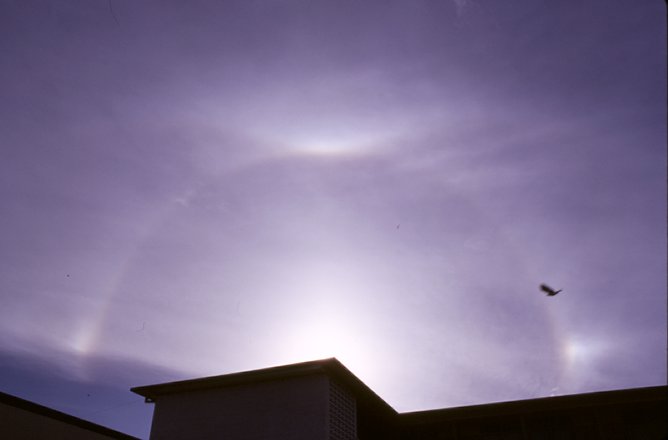
If the sun or moon is high enough in the sky, a lower tangential arc
might be seen just above the horizon.

Outside the 22-degree halo is the rarer 46-degree halo. This photo
includes a sundog, an extended tangential arc to the 22-degree halo, and a more
colorful circumzenith arc at the top of the 46-degree halo.

The lower left tangential arc to the 46 degree halo is extremely rare.

The circumzenith halo at the top of the 46-degree halo has some of the
best colors. It is shown here above the 22-degree halo and its tangential arc.
(There is dirt on this old photo.)

Reflections off the bottoms of flat-falling ice crystals can create the
solar pillar, a bright line above the sun (or moon or streetlights).
The sundog can also be stretched vertically by such reflections.
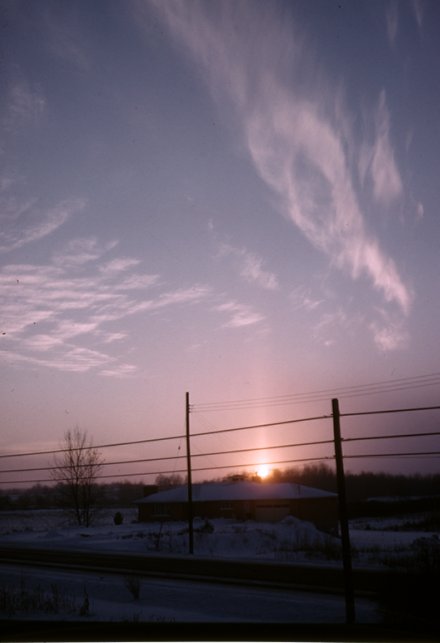
On a flight over the Pacific was this view of an undersun.
It indicates snow crystals acting like perfect horizontal mirrors, reflecting
an image of the sun to the viewer. Only perfect ice crystals can do this. The
slight elongation indicates a slight fluttering of the crystals.
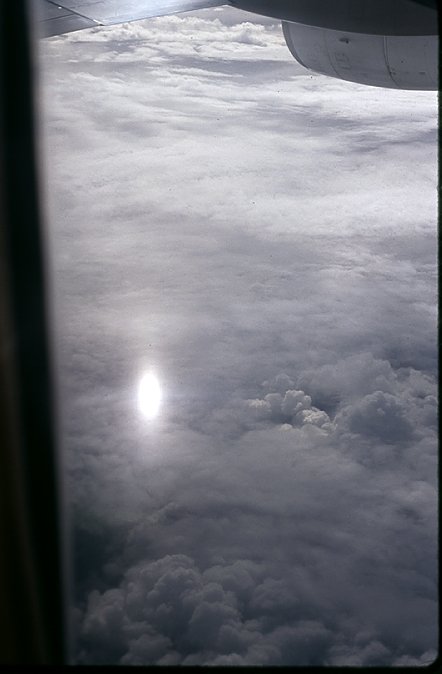 (1 Apr 1997)
(1 Apr 1997)
The undersun can also have an undersun dog, shown here to the left of
the brighter undersun.
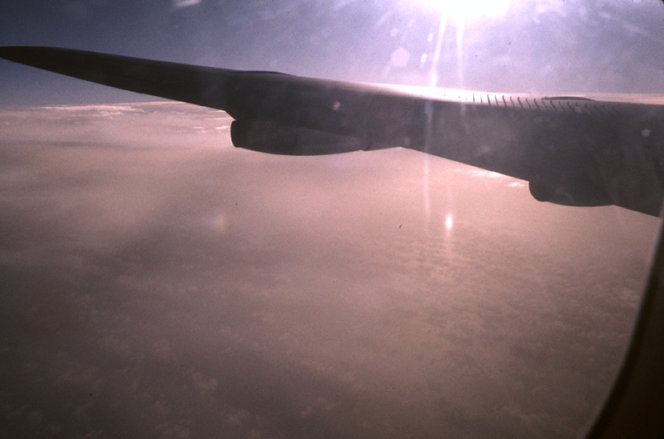
So be observant! Look out the window and up in the sky. You may see
something beautiful.
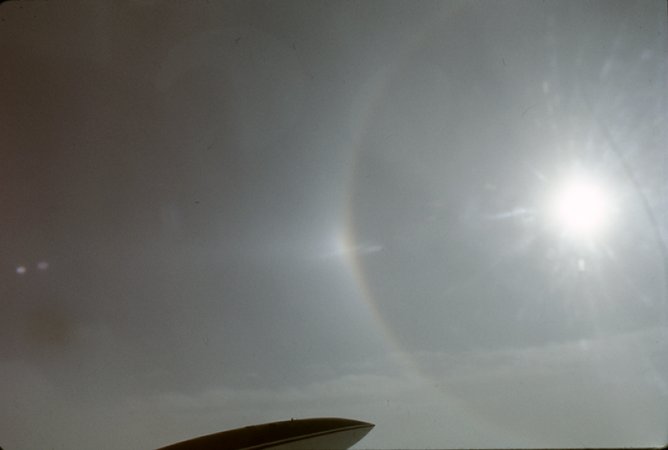
Back, Next
Home,
sequence,
equipment,
clouds,
vapor growth,
snowstorm,
crystal growth,
cloud seeding history,
related topics,
water optics,
trouble shooting